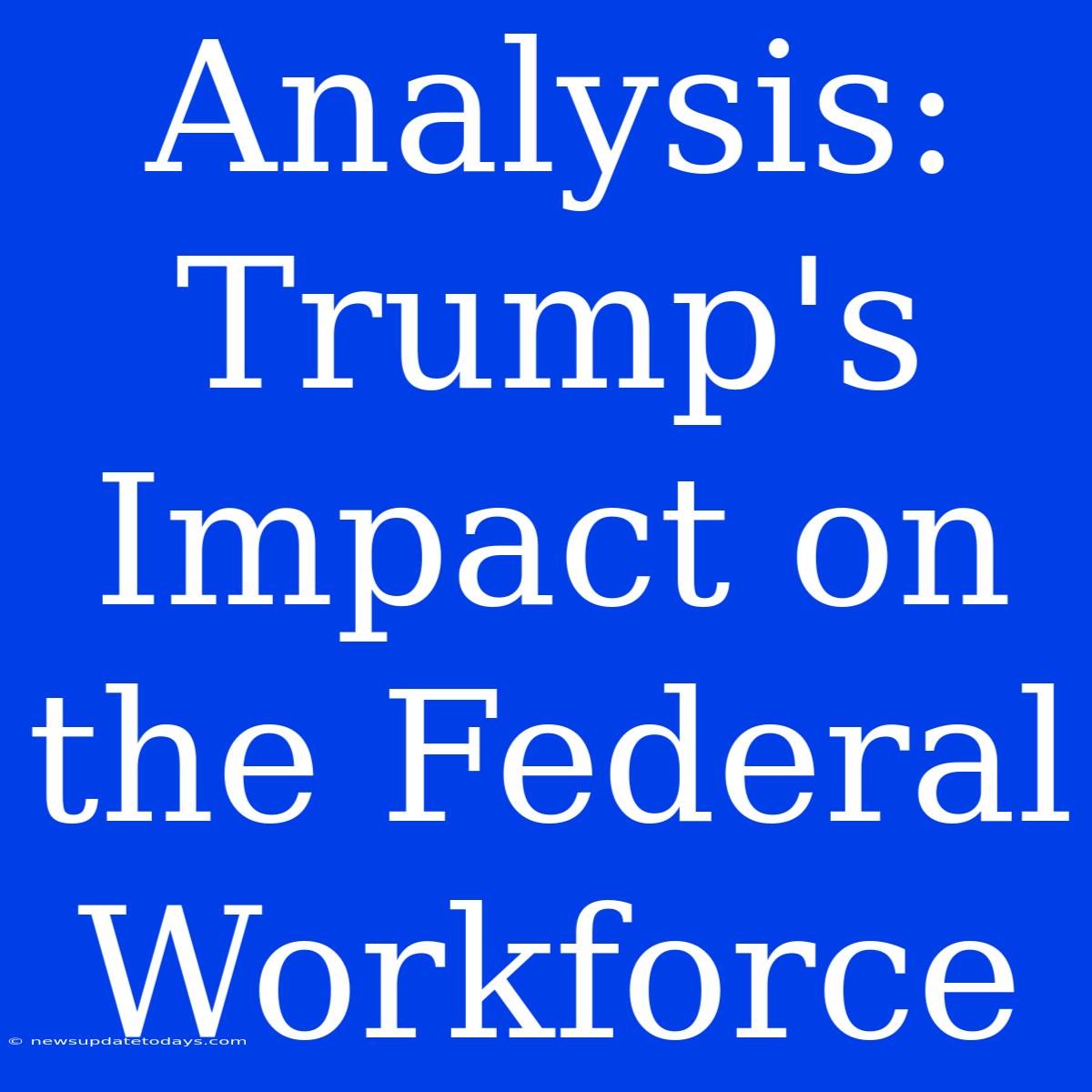Trump's Impact on the Federal Workforce: A Deep Dive Analysis
Donald Trump's presidency (2017-2021) left an undeniable mark on the federal workforce. This analysis explores the significant changes implemented during his administration, examining both the intended effects and the unintended consequences. We delve into the impacts on morale, hiring practices, and the overall effectiveness of the federal government.
Key Policy Changes and Their Ramifications
1. The "Drain the Swamp" Narrative and its Fallout: Trump's campaign rhetoric centered on eliminating bureaucratic inefficiency and corruption, dubbed "draining the swamp." This resonated with many voters, but its translation into policy led to significant challenges.
- Increased political pressure: Appointees were often chosen based on loyalty rather than experience, potentially compromising the impartiality and expertise within federal agencies.
- Erosion of civil service protections: Attempts to weaken civil service protections, while aiming to streamline processes, sparked concerns about the politicization of the workforce and the loss of experienced employees.
- Reduced morale and productivity: The constant uncertainty and the perception of political interference negatively impacted morale among federal employees, potentially leading to decreased productivity and efficiency.
2. Hiring Freezes and Budget Cuts: The Trump administration implemented hiring freezes and budget cuts across several federal agencies.
- Impact on agency capacity: These measures hindered agencies' ability to fill critical positions, slowing down crucial government functions and potentially impacting service delivery.
- Increased workload for remaining employees: Existing employees faced increased workloads and burnout, further contributing to declining morale.
- Long-term consequences for institutional knowledge: The loss of experienced personnel through attrition and hiring freezes resulted in a decline in institutional knowledge, making it harder for agencies to adapt and respond to challenges.
3. Changes in Agency Leadership and Priorities: The appointment of new agency heads often led to shifts in agency priorities and policy directions.
- Policy reversals and inconsistencies: Changes in leadership resulted in inconsistencies and reversals of existing policies, causing confusion and inefficiency within agencies.
- Focus on political agendas: Some argue that agency priorities shifted to reflect the administration's political agenda, potentially undermining the agencies' mission-critical functions.
- Impact on scientific integrity: Concerns arose about the suppression of scientific findings and the politicization of scientific agencies, undermining their credibility and the quality of their work.
Long-Term Effects and Lasting Legacy
The long-term effects of Trump's policies on the federal workforce are still unfolding. The challenges include:
- Rebuilding trust and morale: Restoring public trust in the federal government requires addressing the erosion of morale and rebuilding confidence in the impartiality and expertise of federal employees.
- Addressing the skills gap: Addressing the skills gap created by hiring freezes and the loss of experienced personnel requires strategic recruitment and training initiatives.
- Protecting the integrity of the civil service: Strengthening civil service protections is crucial to ensure the impartiality and expertise of the federal workforce and to prevent undue political influence.
Conclusion
Trump's impact on the federal workforce was multifaceted and complex. While some changes aimed to improve efficiency, others raised concerns about political influence, morale, and the long-term capacity of government agencies. Understanding these effects is critical for future administrations to effectively manage and support the federal workforce, ensuring the continued delivery of essential government services. Further research is needed to fully assess the lasting consequences of these policy changes.

